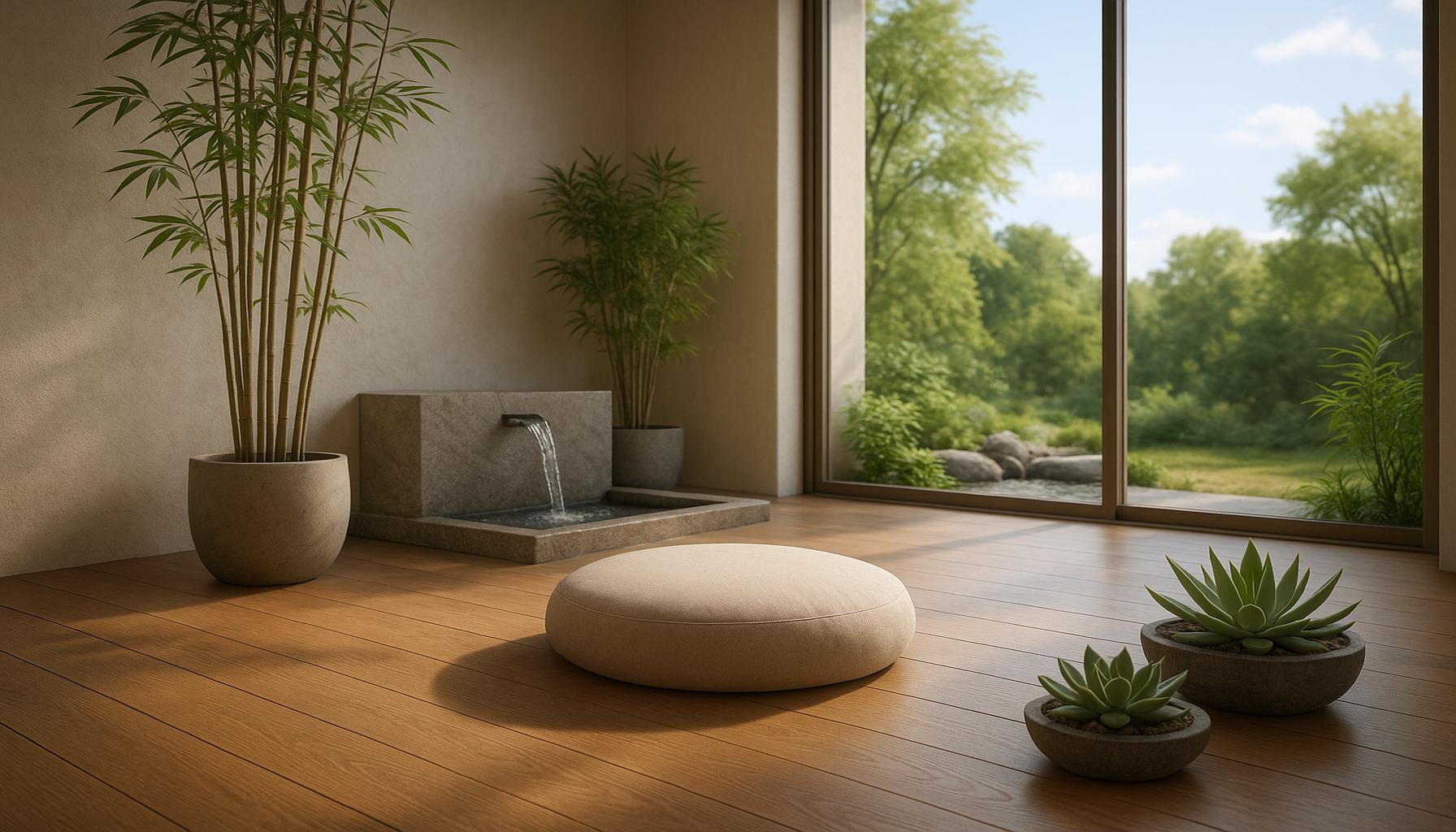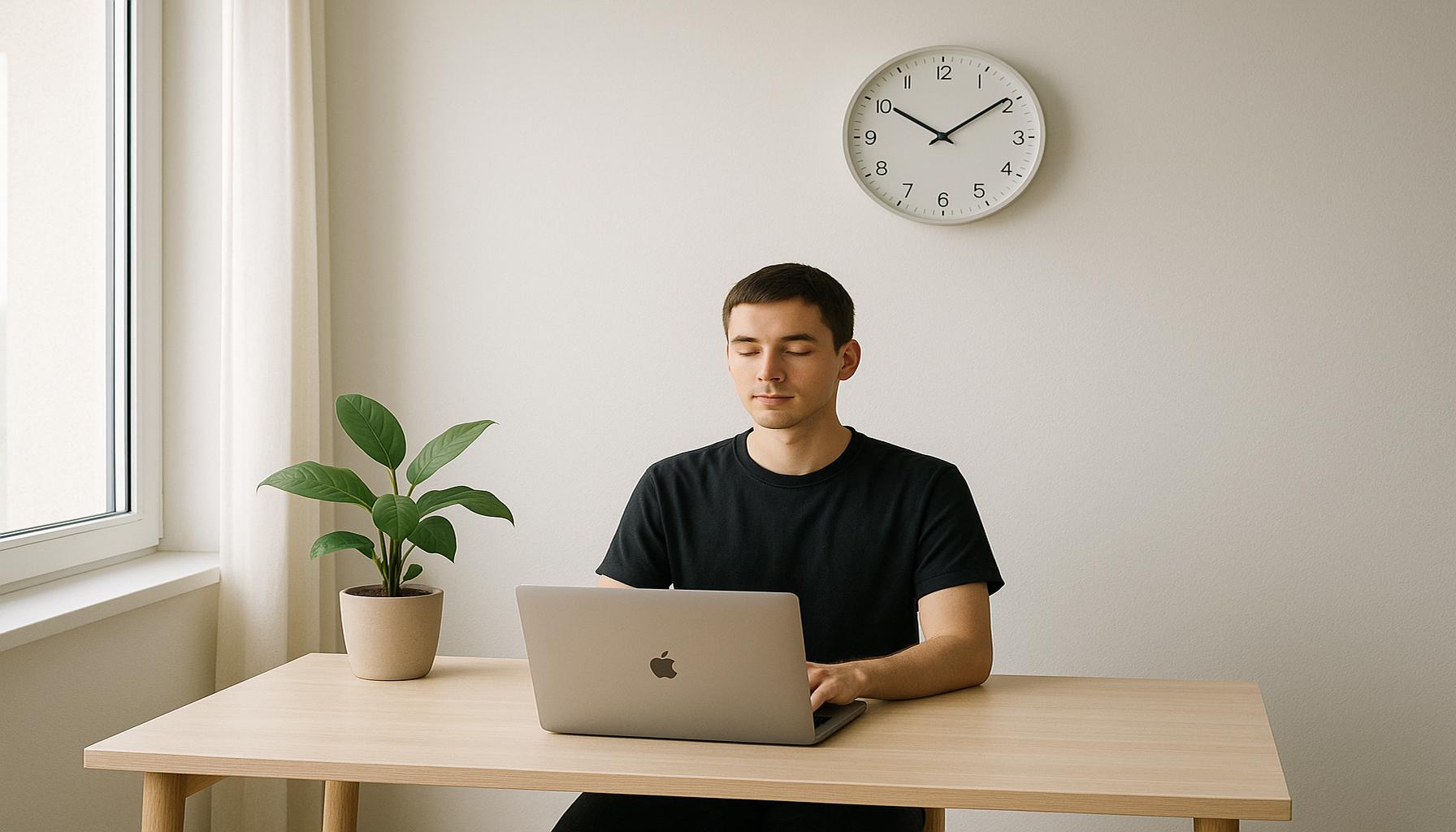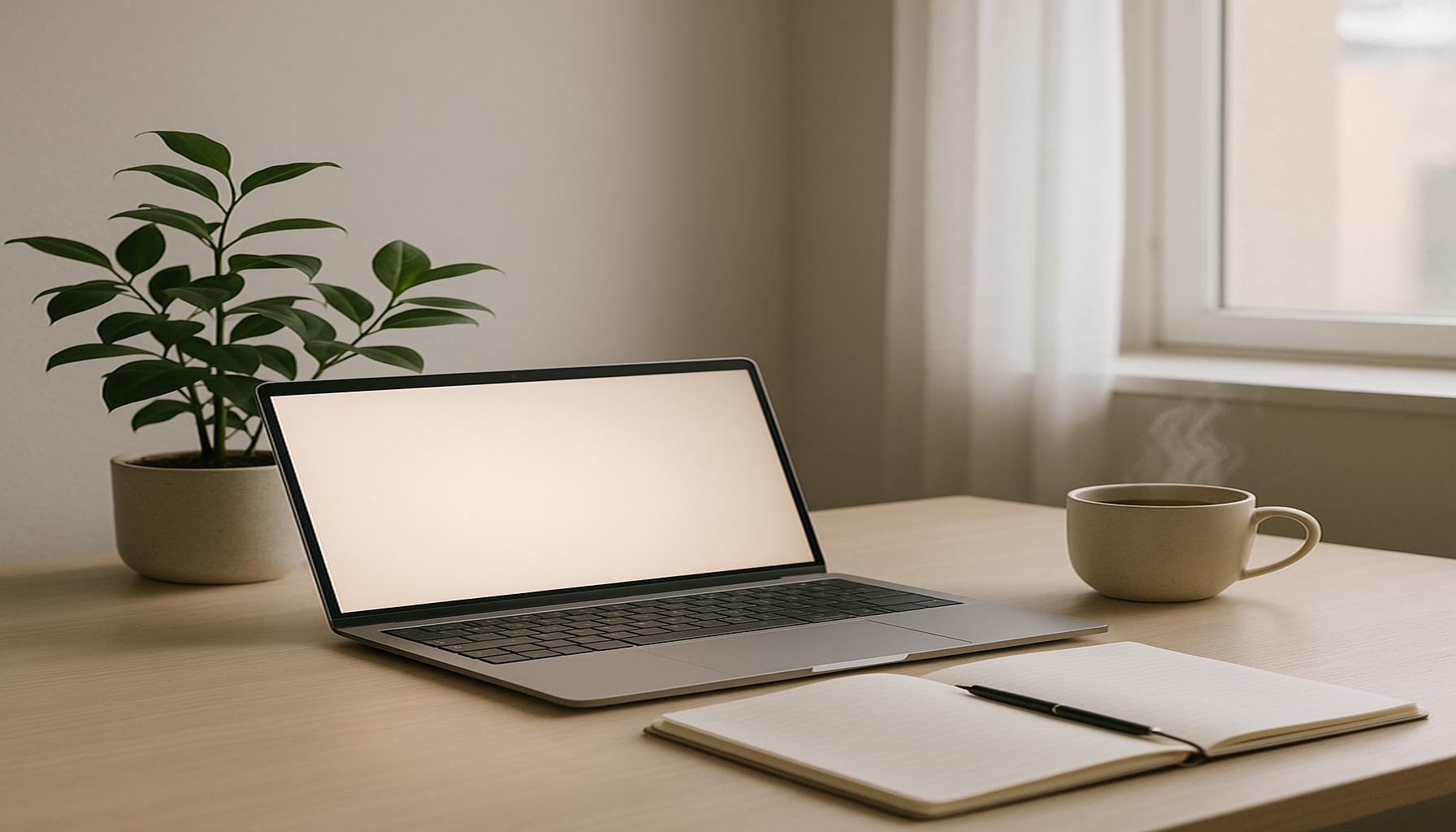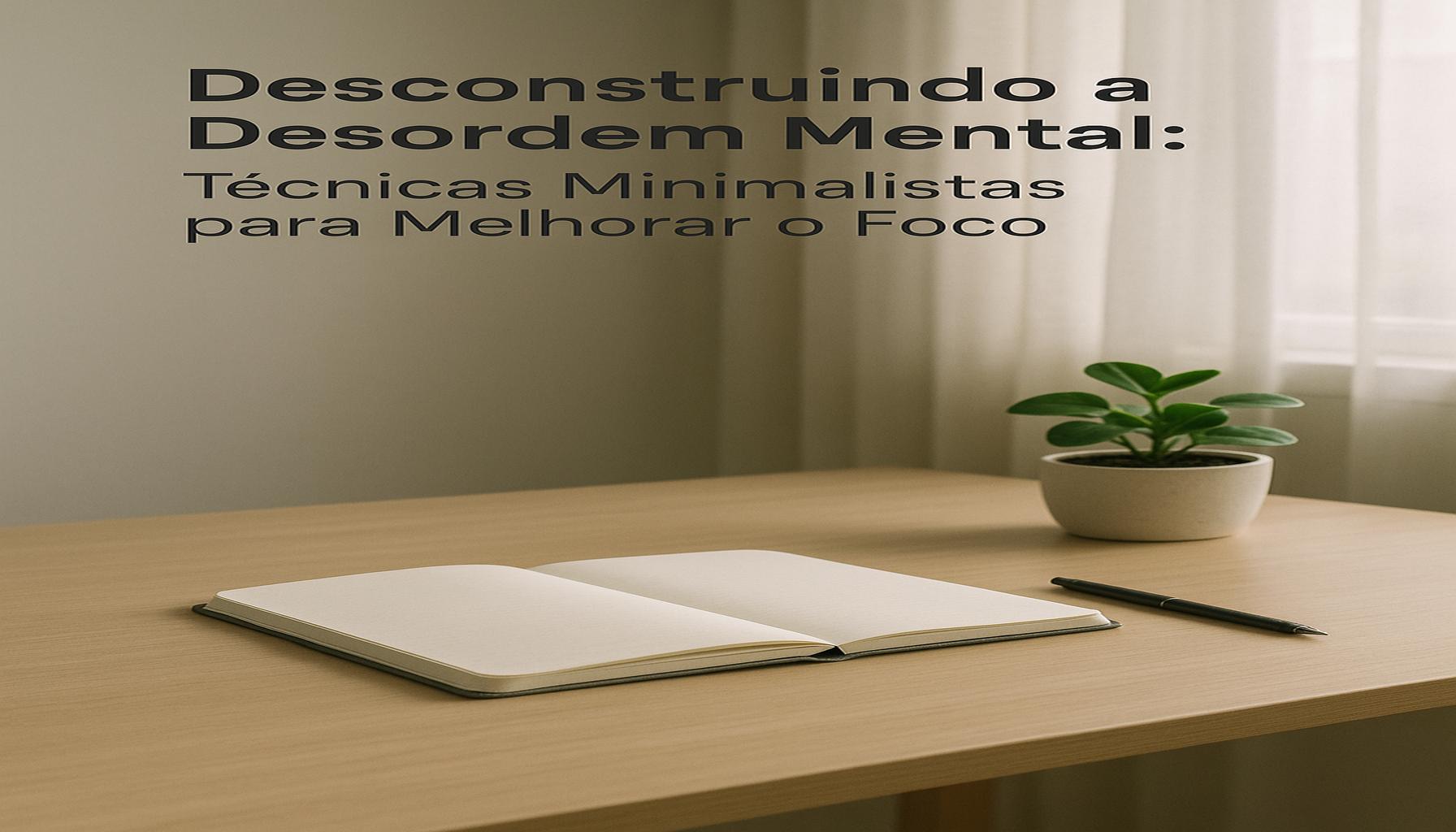Reflection Spaces: How to Create Minimalist Meditation Areas to Improve Personal Focus

Finding Stillness in a Busy World
In today’s fast-paced society, the need for personal focus has never been more crucial. Many individuals have begun to recognize the transformative benefits of creating designated areas for meditation and reflection. These minimalist meditation spaces serve as powerful tools for enhancing mental clarity, emotional stability, and overall well-being.
Why Reflection Spaces Matter
Reflection spaces play a significant role in personal development, helping to reduce distractions and nurturing a deeper connection to oneself. Creating a sanctuary for introspection offers various benefits that can dramatically improve quality of life. Here are a few key advantages:
- Enhanced concentration – By reducing physical and mental clutter, you subsequently minimize mental noise, allowing for improved focus on daily tasks or meditation practices.
- Stress relief – A tranquil and peaceful environment can encourage relaxation and reflection, making it easier to cope with stressors present in modern life.
- Mindfulness practice – Dedicating specific areas for mindfulness nurtures a consistent meditation routine, integrating these calming practices into your daily life.
Research supports these benefits; studies have shown that regular meditation can significantly reduce symptoms related to anxiety and depression. This underscores the importance of having a personal space dedicated to this practice.
Elements of a Minimalist Meditation Area
Creating your reflection space does not have to be a complex endeavor. In fact, simplicity is often key in cultivating a soothing atmosphere. Here are some essential features to consider when designing your personal meditation sanctuary:
- Natural Light – Position your space where natural sunlight can flow in, as natural light has been shown to enhance mood and boost energy levels. Consider a corner by a window or in a sunlit room.
- Comfortable Seating – Choose simple cushions, a yoga mat, or a small chair that invites relaxation. The seating should promote comfort while maintaining an uncluttered appearance, as this aids in establishing a focused mindset.
- Inspirational Decor – Incorporate minimal decor elements such as plants, soft textures, or calming artwork. These elements not only enhance the visual appeal of your space but also evoke positive feelings and inspire a meditative atmosphere.
In this article, you will discover the process of designing a minimalist meditation area that caters to your unique needs. From selecting color palettes that promote calmness to incorporating calming scents through essential oils, there are numerous approaches you can take to create a holistic environment.
As we delve deeper into practical steps and creative ideas, you’ll find inspiration to cultivate a sanctuary that enhances your personal focus, ultimately leading to a more centered and fulfilling life. Embrace the journey of self-discovery as you explore the possibilities within your dedicated reflection space.
DIVE DEEPER: Click here to enhance your daily efficiency
Crafting Your Personal Sanctuary
When it comes to designing a minimalist meditation area, the aim is to create a space that encourages peace and stillness without the distractions of everyday life. Establishing your reflection space begins with recognizing your personal needs and understanding how this environment can cater to them. A few fundamental principles can guide you in the process of creating a sanctuary that promotes mental clarity and emotional well-being.
Assessing Your Space
The first step in creating a meditation area is assessing the space available to you. This could be as simple as a corner of a room or a dedicated area in your backyard. When selecting a space, consider the following factors:
- Size – Choose a space that is comfortable yet intimate to avoid clutter. A small nook or a quiet corner can often be more appropriate for meditation than a large, open area.
- Quietness – Look for a spot away from the bustle of daily life, whether it’s away from noisy neighbors or the distractions of a busy household. Isolation enhances focus.
- Accessibility – Make sure your meditation area is easily accessible. You are more likely to use it if it is convenient to reach, which in turn supports the development of a regular practice.
Once you’ve pinpointed the right location, take time to envision how you want to feel in this space. Is it a place for deep meditation, or is it also meant to be used for reading and reflection? Understanding your intentions will inform the choices you make later.
Selecting the Right Aesthetic
To evoke a sense of tranquility, selecting the right aesthetic is crucial. Your minimalist meditation area should reflect simplicity and calmness. Consider these suggestions to create the right ambiance:
- Color Palette – Opt for soft, neutral colors like whites, light browns, or muted blues. These shades create a serene environment that minimizes overstimulation.
- Natural Materials – Incorporating materials such as bamboo, wood, or stone can enhance the organic feel of your space. These materials often bring a sense of warmth and earthiness that fosters connection to nature.
- Calming Textures – Use plush rugs or soft cushions that invite comfort and stillness. The tactile aspect of your space plays a significant role in setting the mood for relaxation.
Additionally, consider incorporating elements that promote sensory engagement, such as a modest water fountain for soothing sounds, or candles emitting gentle flickers of light. Each feature chosen should align with the function of the space while reinforcing a sense of calm.
As you curate your reflection space, remember that the journey of creating a minimalist meditation area is as important as the space itself. By thoughtfully considering the elements that resonate with you, you will not only improve your personal focus but also deepen your connection with yourself. The process can be transformative, guiding you toward a more balanced and fulfilling life.
When delving into the world of reflection spaces, it’s essential to understand the key elements that foster a tranquil environment conducive to meditation and personal focus. One pivotal aspect to consider is the concept of minimalism. By embracing a minimalist approach, you not only reduce visual clutter but also create a sanctuary where your mind can retreat from the chaos of daily life. This simplicity allows your thoughts to settle, paving the way for deeper concentration and clarity.
Next, the choice of natural materials plays a significant role in setting the tone for your meditation area. Incorporating elements such as wood, stone, or bamboo fosters a connection to nature, which can enhance your sense of calm. Additionally, utilizing soft, neutral colors can further cultivate a serene atmosphere, making it easier to focus on your inner peace rather than external distractions.
Another essential factor is lighting. Adequate yet gentle lighting can significantly affect your mood and focus. Consider using warm, soft lighting or even candles to maintain a soft glow, inviting in serenity rather than harshness. This carefully curated ambiance not only improves focus during meditation sessions but also enhances your overall well-being.
Don’t forget about the arrangement of space. The layout of your meditation area should promote both comfort and accessibility. Ensure that your seating is inviting and that your space allows for easy movement and thought flow. Whether you prefer a seated position on cushions or a meditation chair, having comfortable and accessible furnishings encourages dedicated reflection time.
Incorporating personal touches such as meaningful decor or natural elements can also enhance your engagement with the space. Think about adding elements like plants or stones you’ve collected, which can serve as physical reminders of your meditative practice and stimulate a deeper connection to the space.
Ultimately, creating reflection spaces that prioritize simplicity and comfort can significantly elevate your personal focus. By integrating these principles into your meditation environment, you invite a transformative experience that goes beyond mere relaxation—cultivating a profound sense of clarity and mindfulness that extends into every aspect of your life.
| Category | Benefits |
|---|---|
| Minimalism | Reduces distractions, enhances clarity of thought. |
| Natural Materials | Promotes tranquility and connection to nature. |
| Soft Lighting | Creates a calming atmosphere, conducive to meditation. |
| Comfortable Arrangement | Encourages relaxation and easy movement. |
| Personal Touches | Enhances engagement and personal connection to the space. |
DISCOVER MORE: Click here to boost your productivity
Incorporating Functional Elements
While aesthetics play an essential role in crafting a minimalist meditation area, functionality is equally significant. Your reflection space should not only look inviting but also serve your meditation needs effectively. Here are several functional elements to consider incorporating into your meditation area that will further enhance your personal focus:
Essential Furniture
Choosing the right furniture can greatly impact the overall atmosphere. The idea is to keep it minimal yet functional:
- Seating – Consider a meditation cushion, a yoga mat, or even a simple chair that supports your posture. The key is to choose something that promotes comfort and stillness without being overly plush or distracting.
- Storage Solutions – If you want to keep your meditation area clutter-free, consider adding a sleek, small shelf or side table. This can be used to store meditation aids, journals, or guided meditations while keeping the area organized and tidy.
Incorporating Mindful Elements
To deepen your meditation experience, include elements that can help facilitate mindfulness:
- Intentional Decor – Use a few pieces of decor that resonate with your spiritual or personal beliefs, such as meaningful art or sculptures. Limit them to one or two pieces to maintain minimalism.
- Natural Lighting – Position your meditation space near a window or a source of natural light. Sunlight promotes a sense of vitality and can significantly boost your mood.
- Plants – Adding greenery can purify the air and foster a calming atmosphere. Consider easy-to-care-for plants like succulents or peace lilies that require minimal maintenance.
Creating a Multi-functional Space
For those limited on space, consider how your meditation area can serve multiple purposes. This flexibility allows for a seamless integration of meditation practice into your everyday life:
- Reading Nook – Soft lighting, comfortable seating, and a small bookshelf can turn your meditation corner into a delightful reading spot as well. This dual functionality ensures that your area remains a priority in your daily routine.
- Art Space – Utilize blank walls for mindfulness and creativity by incorporating an easel or drawing materials. Such a setting invites spontaneous creativity, and art can be a meditative activity in itself.
In addition to these functional elements, consider integrating technology mindfully. Tools such as meditation apps or calming sound machines can support your practice. However, it is essential to set boundaries; use technology that complements the meditation experience without becoming a source of distraction.
These thoughtful design choices will not only enhance the usability of your reflection space but will also contribute to a more profound level of focus and tranquility during your meditation sessions. By merging beauty with purpose, your tranquil sanctuary will serve as a daily retreat from the chaos of the outside world, allowing you to reconnect with yourself more deeply.
DISCOVER MORE: Click here to learn how to declutter your digital space
Conclusion
In our fast-paced world, the need for personal reflection spaces has never been greater. By creating minimalist meditation areas tailored to your individual preferences and needs, you can cultivate a sanctuary that enhances your personal focus. This isn’t just about aesthetics; it’s about weaving functionality and mindfulness into the fabric of your everyday environment.
As we’ve explored, integrating essential furniture, intentional decor, and natural elements can transform a simple corner into a serene oasis. These choices not only ensure that your space is inviting but also play a crucial role in sustaining a disciplined meditation practice. Additionally, embracing multi-functional elements can effectively maximize limited spaces, allowing your meditation area to serve various purposes while still prioritizing tranquility.
Remember, the essence of a reflection space lies in its ability to facilitate mental clarity and peace. As you embark on this journey, continuously assess what resonates with you, and be open to adjusting your space as you evolve. Think of your minimalist meditation area as a canvas for your daily practice—a venue for growth, introspection, and rediscovery.
In conclusion, creating a minimalist meditation space requires thoughtfulness and intention. Whether you are new to meditation or a seasoned practitioner, deliberately designing your reflection space can considerably enhance your experience. Redirect your focus inward to foster mindfulness that reverberates through every aspect of your life, ultimately leading to greater balance and harmony.


